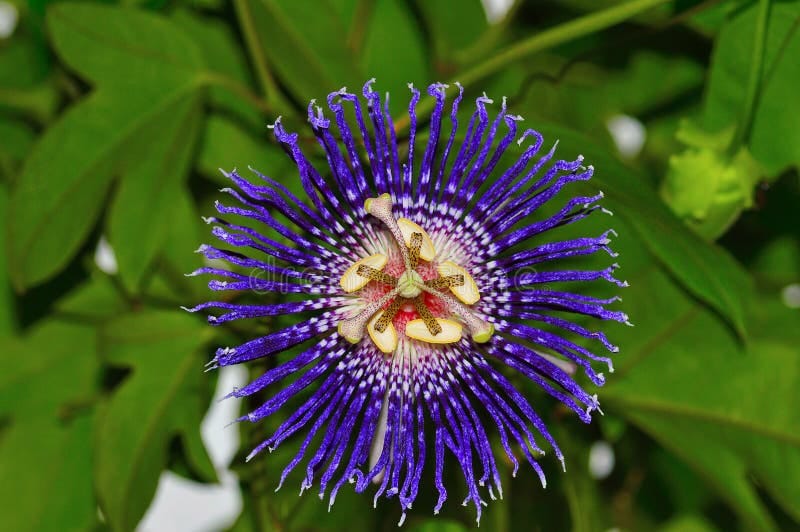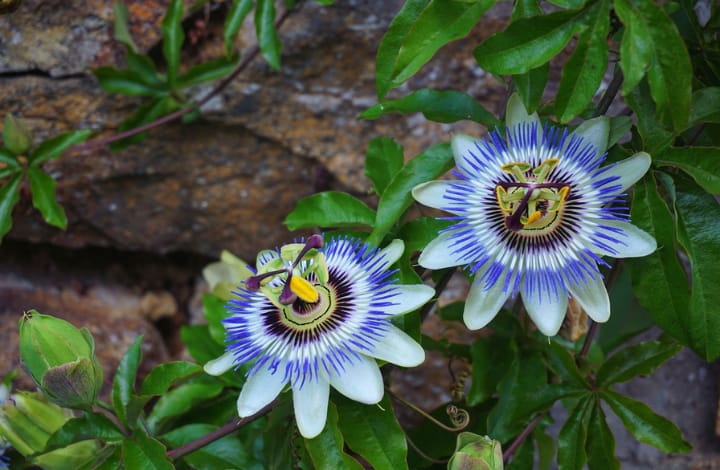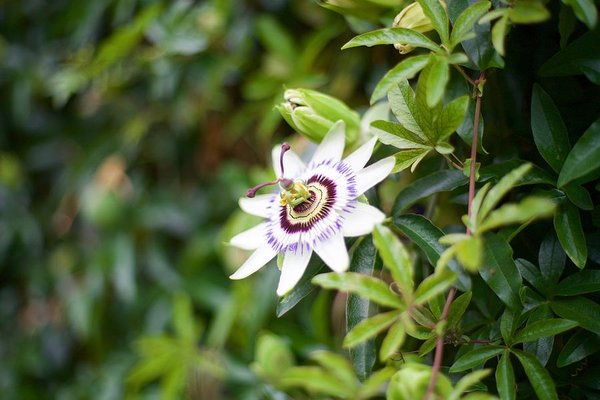Krishna Kamal: The Sacred Flower of Mythology, Divine Symbolism, and the Epic Tale of Mahabharata

The Krishna Kamal, also known as the Passion Flower, is more than just a striking bloom. With its intricate structure and vibrant hues, this flower holds deep spiritual and mythological significance, particularly in Indian culture. Often referred to as the “Lotus of Krishna,” it is considered a divine symbol and a reflection of the epic tale of the Mahabharata.

A Unique and Exquisite Bloom
The Krishna Kamal stands out with its intricate petals in shades of purple, white, and blue. This visually captivating flower is highly sought after by gardeners for its aesthetic appeal and its association with spirituality.
Symbolism in Hindu Mythology
In Hindu tradition, the Krishna Kamal is believed to embody various elements of the Mahabharata and divine figures:
- Trinity Representation: The three main buds at the top of the flower symbolize Lord Brahma, Lord Vishnu, and Lord Shiva, the trinity of Hinduism.
- The Pandavas and Krishna: Beneath these buds lie five delicate petals, representing the five Pandava brothers and Lord Krishna himself.
- Sudarshan Chakra: The central structure of the flower resembles a spinning wheel, signifying Lord Krishna’s divine weapon, the Sudarshan Chakra.
- The Kauravas: Surrounding this center are approximately 100 small petals, believed to symbolize the 100 Kaurava brothers from the Mahabharata.

Spiritual and Religious Significance
Krishna Kamal is not just admired for its beauty; it holds sacred value in many cultures. The flower is often cultivated in temple gardens, homes, and balconies as a sacred plant. Devotees use it in religious ceremonies and daily prayers as an offering to the gods, viewing it as a symbol of peace and devotion.
Ideal Growing Conditions
For those interested in cultivating Krishna Kamal, the plant thrives in well-draining, nutrient-rich soil. While regular watering is essential, reducing water intake during the flowering season helps prevent root rot. Gardeners also find that misting the nodes and roots supports healthy growth.
Blooming Season and Growth Pattern
The Krishna Kamal flourishes in warm, humid conditions, blooming from early spring through summer. The peak blooming season is between March and mid-June, when the flowers display their full vibrancy. As a climbing plant, Krishna Kamal requires support such as a trellis or wall to grow, often covering surfaces with lush green leaves and vibrant flowers. With proper training, it can even be shaped into decorative patterns, adding charm to gardens and indoor spaces alike.
With its rich mythological roots and striking appearance, Krishna Kamal remains a cherished flower, blending natural beauty with divine symbolism.












